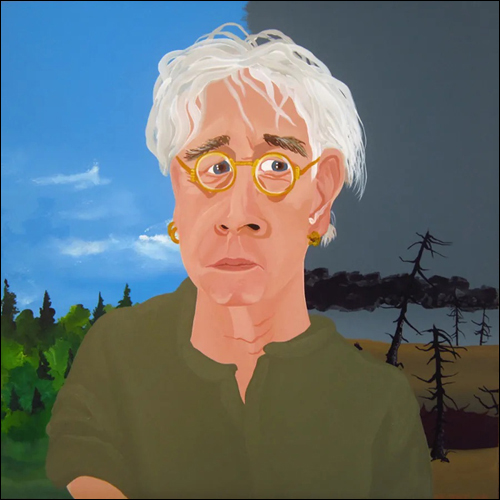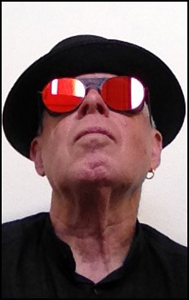May 01, 2015
In his new memoir, Rumours Of Glory, Bruce Cockburn shares stories from a career that began in the mid-1960s, following a stint at Boston’s Berklee College of Music. The Canadian troubadour also offers accounts of his world travels, social activism and spiritual life. There are plenty of musical memories as well, which are reinforced by a 9-CD box set of the same name, with tracks selected by Cockburn from his 31 albums to offer parallel audio accompaniment.
In your book, you describe your rather unique reaction to hearing yourself on the radio for the first time back in 1970.
I had been writing songs for a few years in a bunch of different bands. So I had these bodies of songs and I felt choked up on them. I felt that having to carry all these songs in my head was getting in the way of writing new ones. So I wanted to make a record, and in my imagination, that record would allow me to forget about those songs because they would have been there and accounted for, so I could get on to writing new ones. Of course, what I didn’t realize was that it doesn’t work like that—when you record those songs, then everyone wants you to play those songs.
On the day my album came out, I was in the Yorkville area, which was the Toronto equivalent of Haight-Asbury or the Village in New York, and was the center of the counterculture scene. This was at a time when free-form FM radio was really just taking off and all the stores in that area would listen to this particular radio station called CHUM. So I’m in a store and they were playing my music. No one knew me but I felt like I had a big finger pointing at me. It was terrifying.
So I left the store and went into a different store that had the same radio station on and they were playing the whole album. You could do that kind of thing back in those days. I felt like I would never have a sense of privacy again. It was a very excruciating experience and I felt I had to duck and hide.
While we are on the subject of hearing yourself, Bono references your song “Lovers in a Dangerous Time” in U2’s “God Part II” [“Heard a singer on the radio late last night/ Says he’s gonna kick the darkness till it bleeds daylight”]. Do you recall the context in which you first heard that? Was it obvious that he was referencing you?
I think the album was out for a year or two before I actually heard it, but it was obvious when I heard the song. I had met Bono in the late ‘80s or very early ‘90s at a Christian festival in England. We had a chat and he expressed his approval of that song at that time, but nobody ever called me to tell me that they had done it. I kind of heard it through the grapevine and eventually I did hear the album, and there it was.
Did you have any exchanges with Jerry Garcia over the years, and what was your response to hearing him perform a song of yours [“Waiting for a Miracle,” which became a Jerry Garcia Band staple in 1989 and appears on the group’s self-titled 1991 live album]?
I heard from audience members that his band was doing the song live. Then his record company applied for the mechanical licenses that are part of the process. I was very excited, so I got the album and I put it on. It was a beautiful version, musically, and it had great energy, but the lyrics were unrecognizable in places. Right after that, a Bob Dylan song came on [“Simple Twist of Fate”] and the lyrics were quite altered in Garcia’s version as well, so I felt better. I told myself: “Well, if he is doing it to everybody, then I am in good company.” [Laughs.]
Sometime that same year, the Dead were doing one of their week-long extravaganzas at Madison Square Garden. I happened to be in New York, and somebody said, “Let’s go put you together with Jerry.” So I was ushered up onto the stage behind the amps where his tent was, and Jerry came out. He was very gracious and a lovely guy. We shook hands, and he said, “Man, it’s great to meet you! That’s a beautiful song, I hope I didn’t screw up the lyrics too much!” And then I said, “Well, I was going to wait till the second time I met you to bring that up, but it’s OK you did it your own way, and I’m glad you did…”
Speaking of iconic rock guitarists, you once shared a bill with Jimi Hendrix and you nearly shared a stage with him.
I was in a band that was originally called The Flying Circus but, because of competition from another band, we changed it to Olivus. We thought the name was terribly clever and we got a job opening shows, including some big ones like Wilson Pickett, Cream and Jimi Hendrix.
The Hendrix one was in Montreal in an arena and, after the show, there was a party in which all the participants were invited to a studio downtown. Hendrix had done an amazing show and, after a while, Mitch Mitchell came in and I got to talk to him. Then Hendrix came in and there was a stage with instruments and equipment but no one was using them. So he looked around at the people in the shadows and he said: “I don’t know what they are staring at. I want to play some music.”
Then he got up onstage and there were open jam sessions. I could have played, but I felt that I wouldn’t have anything to contribute to this jam session, so I would be better off not to reveal that to anyone present. I listened to a little bit, then I left. It was very interesting. He had a natural vibe about him. He just seemed like a regular guy and he seemed to expect other people to act like him, too.
What is the most inspiring live performance that you have ever witnessed as an audience member?
It would be a toss-up between the first time I saw Ani DiFranco and the only time I have ever seen Laurie Anderson, for very different reasons. I saw Laurie Anderson when she was touring the Mister Heartbreak album, and that was an incredible union of art, technology, humor and thoughtfulness. Then years later, the first time I met Ani, we were both playing at the Telluride Bluegrass Festival [in 1995]. At the time, I had never listened to her music, but I couldn’t believe what I was hearing.
I chose to answer in terms of pop performances, but nothing could top hearing John Coltrane on a Saturday afternoon at The Jazz Workshop in Boston in ‘64.
Credit – Parting Shots: Bruce Cockburn – Relix.com









